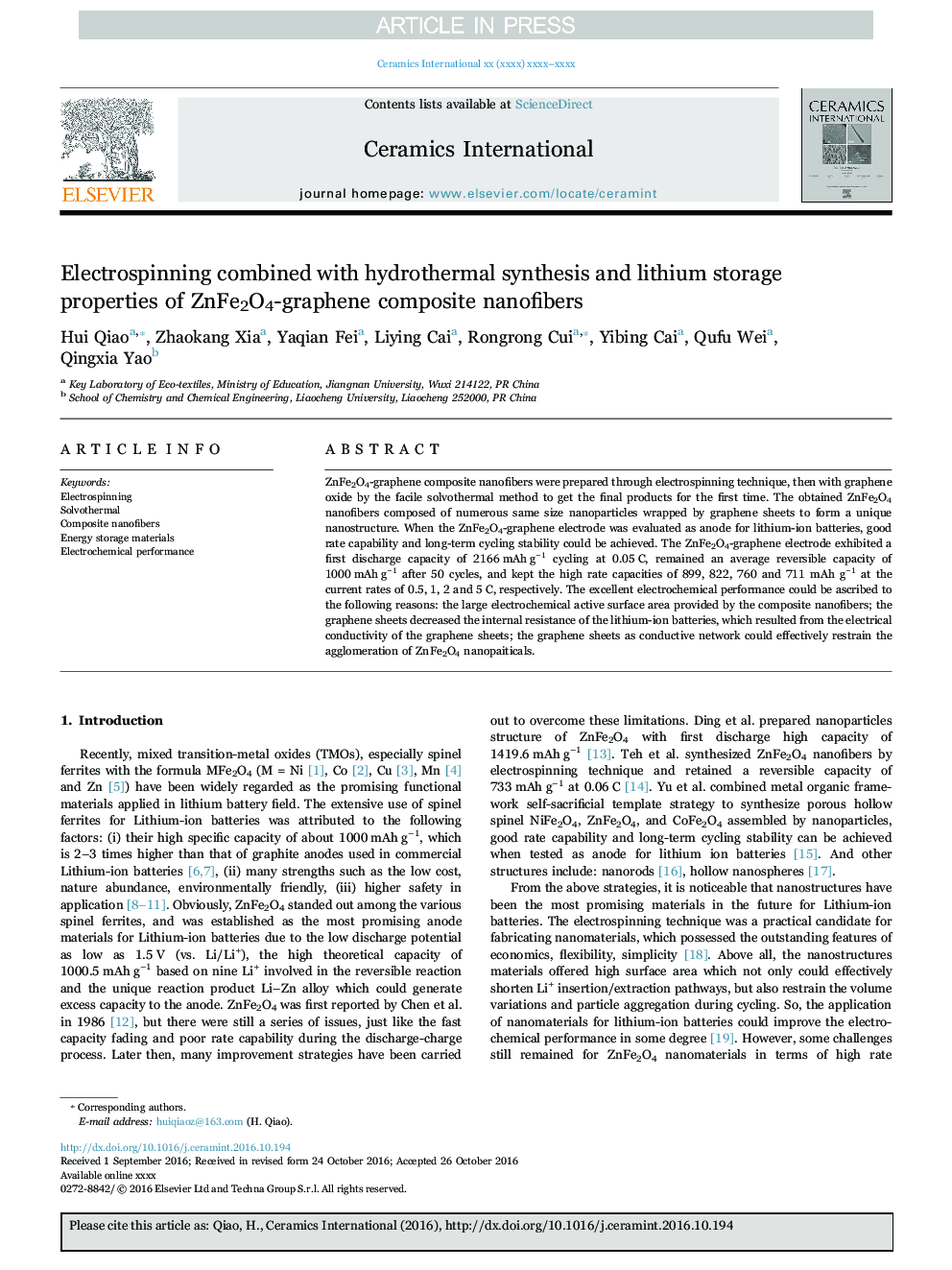| Article ID | Journal | Published Year | Pages | File Type |
|---|---|---|---|---|
| 5438273 | Ceramics International | 2017 | 7 Pages |
Abstract
ZnFe2O4-graphene composite nanofibers were prepared through electrospinning technique, then with graphene oxide by the facile solvothermal method to get the final products for the first time. The obtained ZnFe2O4 nanofibers composed of numerous same size nanoparticles wrapped by graphene sheets to form a unique nanostructure. When the ZnFe2O4-graphene electrode was evaluated as anode for lithium-ion batteries, good rate capability and long-term cycling stability could be achieved. The ZnFe2O4-graphene electrode exhibited a first discharge capacity of 2166 mAh gâ1 cycling at 0.05 C, remained an average reversible capacity of 1000 mAh gâ1 after 50 cycles, and kept the high rate capacities of 899, 822, 760 and 711 mAh gâ1 at the current rates of 0.5, 1, 2 and 5 C, respectively. The excellent electrochemical performance could be ascribed to the following reasons: the large electrochemical active surface area provided by the composite nanofibers; the graphene sheets decreased the internal resistance of the lithium-ion batteries, which resulted from the electrical conductivity of the graphene sheets; the graphene sheets as conductive network could effectively restrain the agglomeration of ZnFe2O4 nanopaiticals.
Keywords
Related Topics
Physical Sciences and Engineering
Materials Science
Ceramics and Composites
Authors
Hui Qiao, Zhaokang Xia, Yaqian Fei, Liying Cai, Rongrong Cui, Yibing Cai, Qufu Wei, Qingxia Yao,
